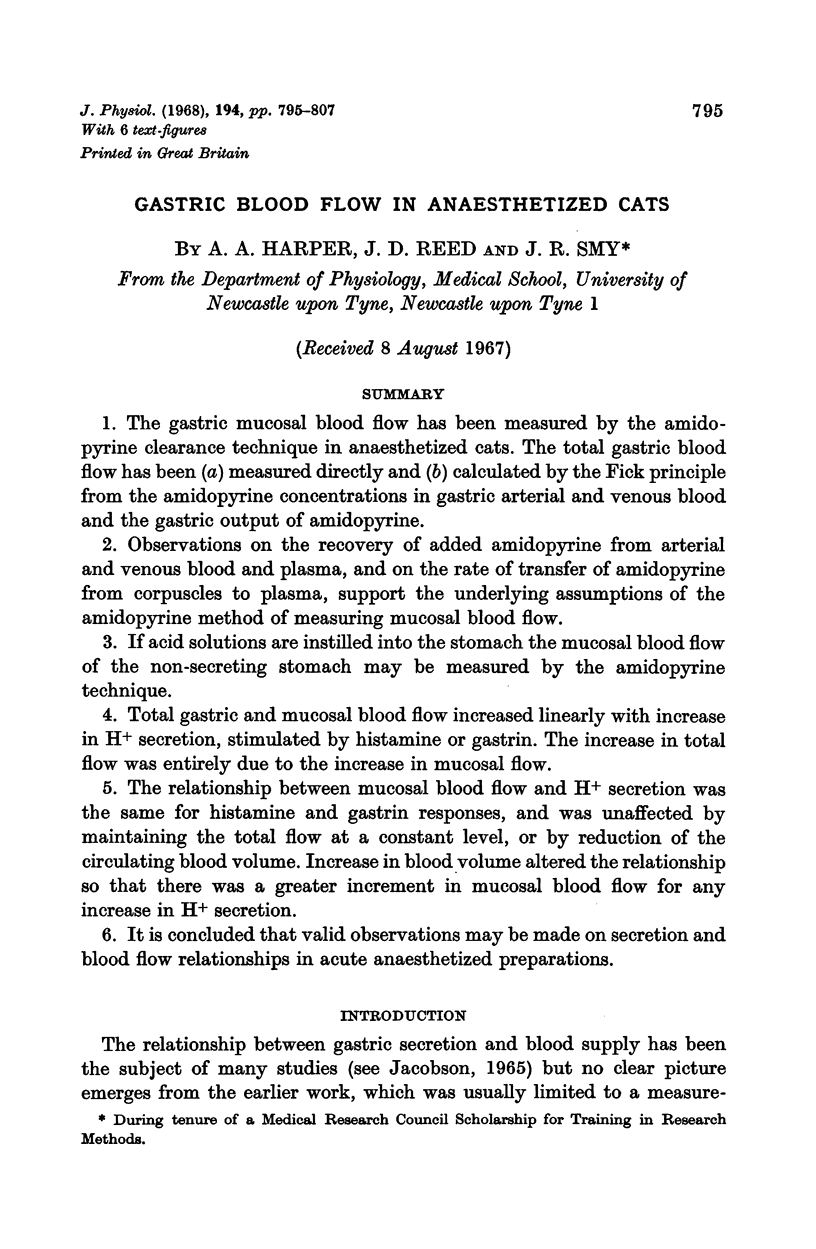Abstract
1. The gastric mucosal blood flow has been measured by the amidopyrine clearance technique in anaesthetized cats. The total gastric blood flow has been (a) measured directly and (b) calculated by the Fick principle from the amidopyrine concentrations in gastric arterial and venous blood and the gastric output of amidopyrine.
2. Observations on the recovery of added amidopyrine from arterial and venous blood and plasma, and on the rate of transfer of amidopyrine from corpuscles to plasma, support the underlying assumptions of the amidopyrine method of measuring mucosal blood flow.
3. If acid solutions are instilled into the stomach the mucosal blood flow of the non-secreting stomach may be measured by the amidopyrine technique.
4. Total gastric and mucosal blood flow increased linearly with increase in H+ secretion, stimulated by histamine or gastrin. The increase in total flow was entirely due to the increase in mucosal flow.
5. The relationship between mucosal blood flow and H+ secretion was the same for histamine and gastrin responses, and was unaffected by maintaining the total flow at a constant level, or by reduction of the circulating blood volume. Increase in blood volume altered the relationship so that there was a greater increment in mucosal blood flow for any increase in H+ secretion.
6. It is concluded that valid observations may be made on secretion and blood flow relationships in acute anaesthetized preparations.
Full text
PDF












Selected References
These references are in PubMed. This may not be the complete list of references from this article.
- BRODIE B. B., AXELROD J. The fate of aminopyrine (pyramidon) in man and methods for the estimation of aminopyrine and its metabolites in biological material. J Pharmacol Exp Ther. 1950 Jun;99(2):171–184. [PubMed] [Google Scholar]
- JACOBSON E. D. THE CIRCULATION OF THE STOMACH. Gastroenterology. 1965 Jan;48:85–109. [PubMed] [Google Scholar]
- Jacobson E. D., Eisenberg M. M., Swan K. G. Effects of histamine on gastric blood flow in conscious dogs. Gastroenterology. 1966 Oct;51(4):466–472. [PubMed] [Google Scholar]
- Jacobson E. D., Linford R. H., Grossman M. I. Gastric secretion in relation to mucosal blood flow studied by a clearance technic. J Clin Invest. 1966 Jan;45(1):1–13. doi: 10.1172/JCI105313. [DOI] [PMC free article] [PubMed] [Google Scholar]
- Jacobson E. D., Swan K. G., Grossman M. I. Blood flow and secretion in the stomach. Gastroenterology. 1967 Feb;52(2):414–420. [PubMed] [Google Scholar]
- Moody F. G. Gastric blood flow and acid secretion during direct intraarterial histamine administration. Gastroenterology. 1967 Feb;52(2):216–224. [PubMed] [Google Scholar]
- SHORE P. A., BRODIE B. B., HOGBEN C. A. The gastric secretion of drugs: a pH partition hypothesis. J Pharmacol Exp Ther. 1957 Mar;119(3):361–369. [PubMed] [Google Scholar]
- Swan K. G., Jacobson E. D. Gastric blood flow and secretion in conscious dogs. Am J Physiol. 1967 Apr;212(4):891–896. doi: 10.1152/ajplegacy.1967.212.4.891. [DOI] [PubMed] [Google Scholar]


